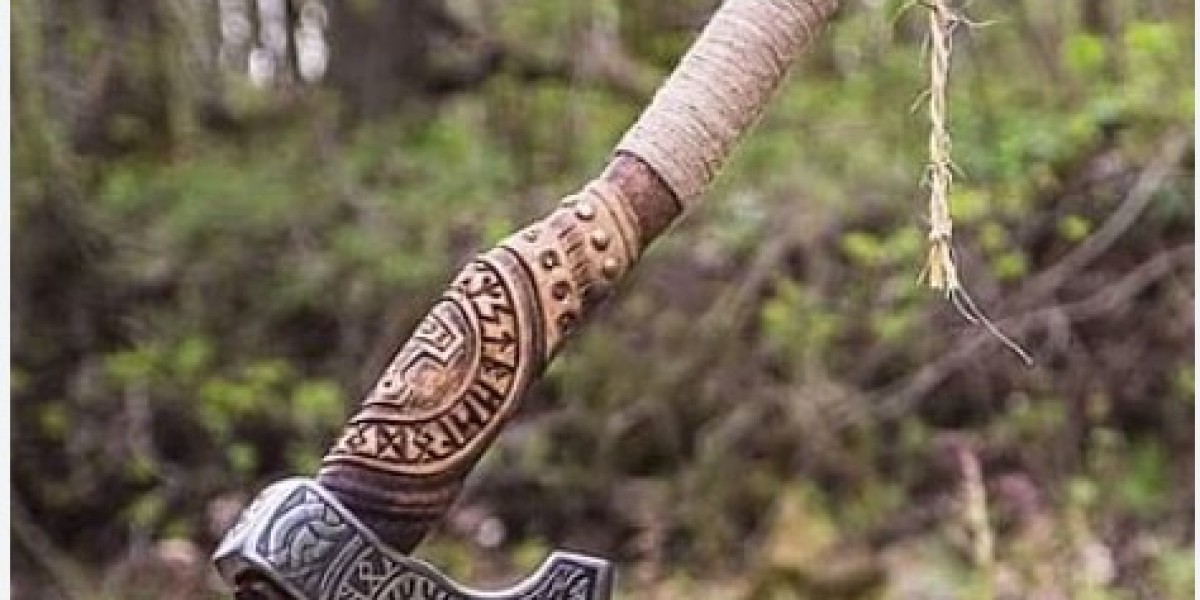Sweden, a land of pristine landscapes and rich history, harbors a treasure trove of Viking artifacts, among which the Viking axe stands out as a symbol of Norse craftsmanship and martial prowess. With a legacy rooted deep in Scandinavia's past, these axes not only served as formidable weapons but also as iconic cultural artifacts. In this article, we delve into the history, significance, and enduring legacy of Viking axes in Sweden.
The Evolution of Viking Axes: The Viking Age, spanning roughly from the late 8th to the mid-11th century, witnessed the emergence of the iconic Viking axe. Initially, these axes were simple tools for daily tasks like woodworking and farming. However, as Scandinavians ventured forth on raiding expeditions and into battles, the axe transformed into a lethal weapon of choice. The design evolved to feature a longer handle and a broader, more menacing blade, optimized for both chopping wood and cleaving adversaries.
Types of Viking Axes: In Sweden, Viking axes came in various forms, each tailored for specific purposes. The most common types include:
- Battle Axes: These were heavy, two-handed weapons designed for cleaving through armor and delivering devastating blows on the battlefield.
- Hand Axes: Smaller, one-handed axes favored for their versatility in close combat and everyday tasks.
- Bearded Axes: Characterized by a distinctive blade shape resembling a beard, these axes were prized for their balance and effectiveness in both chopping and hooking maneuvers.
- Dane Axes: Also known as "great axes," these imposing weapons featured long handles and massive heads, capable of inflicting grievous injuries with sheer force.
Significance in Viking Culture: Viking axes held profound cultural significance beyond their utilitarian purposes. They were symbols of status, power, and honor, often adorned with intricate carvings and runes that spoke of the wielder's lineage and achievements. In Norse mythology, axes were associated with gods like Thor, further elevating their mythical status among the Viking people.
Archaeological Discoveries: Sweden's rich archaeological landscape has yielded numerous Viking axe artifacts, providing invaluable insights into Norse craftsmanship and warfare. Sites like Birka, located on Björkö Island, have unearthed a wealth of Viking weapons, including finely crafted axes crafted by skilled artisans.
Legacy and Modern Interpretations: Though the Viking Age has long passed, the legacy of Viking axes endures in Swedish culture. Today, these iconic weapons are celebrated in museums, reenactments, and cultural festivals, serving as reminders of Sweden's storied past and the indomitable spirit of its Viking ancestors. Moreover, the influence of Viking axe design can be seen in modern interpretations, from decorative replicas to functional tools crafted by contemporary blacksmiths.
The Viking axe stands as a testament to the ingenuity, craftsmanship, and martial prowess of Sweden's Viking ancestors. Beyond its role as a weapon of war, it embodies the rich cultural heritage of Scandinavia and continues to captivate the imagination of people around the world. As we unearth more about Sweden's Viking past, the legacy of these iconic axes shines ever brighter, reminding us of the enduring impact of Norse civilization on the world stage. Viking axe for sale








